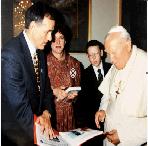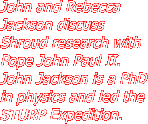Banzai Online Casino in Nepal: Your Ultimate Guide
If you're in Nepal and looking to try your luck with online casinos, you’ve probably heard of Banzai Casino. It’s gaining a lot of attention, and here’s why.
What is Banzai Online Casino?
Banzai Casino https://banzai-casino-np.com/ is a modern online platform where you can play all your favorite casino games without leaving your home. Whether you love live dealer games, Banzai has something for everyone. It’s designed to give you the thrill of a real casino experience right from your mobile phone, which makes it an excellent choice for players looking to enjoy gaming from the comfort of their home.
Why Choose Banzai Casino in Nepal?
There are many reasons why Banzai stands out in the online gambling world, especially for players in Nepal. The combination of a user-friendly website and a great variety of games makes Banzai a top choice for all types of players. Besides the great gaming options, Banzai also offers exciting promotions and fast payment solutions, ensuring that players have a seamless experience from start to finish.
Simple Website: Banzai’s website is well-organized. You don’t need to be a tech expert to enjoy it. Whether you’re a first-time user or a experienced gambler, you’ll find it straightforward to sign up, make deposits, and start playing without any hassle.Great Game Selection: Banzai Casino offers a wide variety of games. From popular slots to classic casino classics like baccarat, you won’t run out of choices. The games are provided by top-notch software providers, ensuring they’re exciting and fair, offering you a high-quality gaming experience every time you play.Bonuses and Promotions: Like many online casinos, Banzai offers exciting bonuses. New players can grab a welcome bonus, and there are regular promotions for returning players. This is a great way to get extra chances to win without spending much, and it also increases your chances of success.Safe and Secure: Banzai takes security seriously. They use the latest encryption technology to keep your personal and financial details safe. You can enjoy the games without worrying about your privacy or financial information being compromised.Payment Options: Making deposits and withdrawals is easy at Banzai. They support various payment methods, including local options for players in Nepal. Whether you prefer using cryptocurrency, you’ll find something that suits you, and all transactions are processed quickly and securely.
How to Get Started at Banzai Casino?
Getting started at Banzai Casino is easy. Just follow these easy steps to get your account up and running:
Sign Up: Head over to the Banzai Casino website and create an account. You’ll need to provide some basic information, such as your name, email, and a secure password, so you can easily access your account in the future. The sign-up process is simple.Deposit Money: After setting up your account, make your first deposit. Banzai supports a wide range of payment methods, so you can choose the one that works best for you. Whether you prefer bank transfers, you’ll find an option that suits your preferences.Start Playing: Now the real fun begins! Choose your favorite game and start playing. You can even try out free games to get a feel for the platform before wagering any real money. But to win big, make sure you’re playing with real stakes, and enjoy the thrill of online gambling.
Mobile Casino Experience
Another great feature of Banzai is its mobile-friendly design. You can play all the games on your tablet, making it perfect for those on the go. Whether you’re waiting for a bus, enjoying a coffee, or relaxing at home, Banzai Casino is always just a tap away, providing you with access to the best casino games whenever you like, wherever you are.
Conclusion
Banzai Casino in Nepal is the perfect place for those who want a reliable online gambling experience. With a wide variety of games, generous bonuses, and easy payment options, it’s an online casino you can trust. What are you waiting for? Head to Banzai, sign up, and try your luck today!
Now you know why Banzai is becoming a popular choice in Nepal. So, are you ready to place your bets? Wishing you success!







